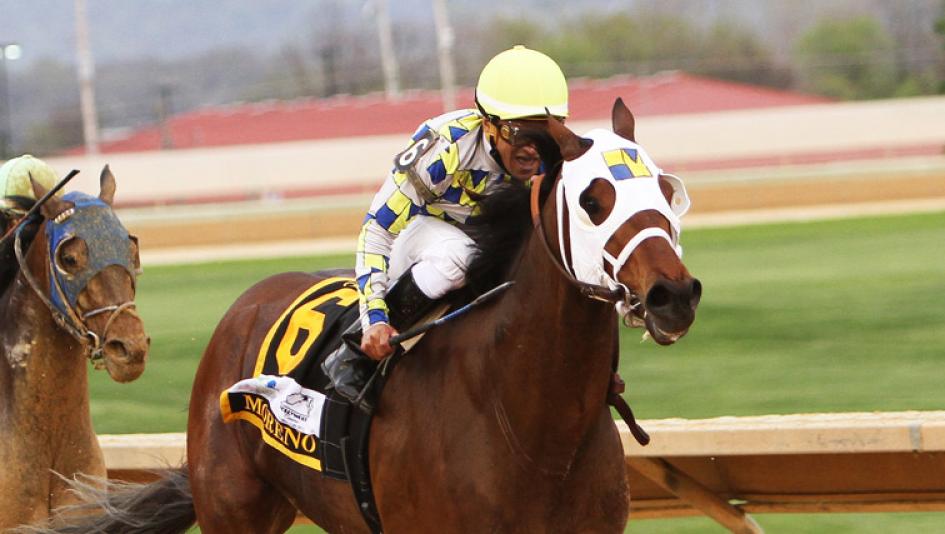
Churchill Downs Betting Preview: Tips to Help You Win Big During Derby Week and Beyond

Moreno wins the Charles Town Classic in April, a race with a negative show pool since Shared Belief did not finish in the money. (Photo by Eclipse Sportswire)
In the Charles Town Classic Stakes on April 18, Daily Racing Form writer and handicapper Matt Bernier saw an opportunity. There was so much being bet to show on the odds-on favorite Shared Belief that it had created what is known as a “negative show pool” — a pool of money where such an overwhelming percentage of the pool is bet on a single horse to show that there’s barely even enough money on the other horses to cover the minimum $2.10 payout should the favorite finish in the top three. Bernier jumped all over it. He bet $2 on every horse to show except Shared Belief.
These pools aren’t common, but they pop up from time to time. These pools are caused either by huge favorites running in small fields, or by “bridge jumpers” — people placing huge bets to show on favorites looking for an easy 5% return on their money. They call these people “bridge jumpers” because if the bet loses, the backup plan is usually to jump off the nearest bridge.
The opportunity that a negative show pool offers an eagle-eyed gambler is the chance to make a big score for a small investment. The winners in pari-mutuel betting are paid out with the money from all the losing wagers. The fewer winners relative to the number of losers in any given bet means larger and larger payouts.
In a negative show pool, there are far fewer dollars bet on the non-favorite horses to show than there is on the favorite. In the unlikely event that the favorite finishes off the board, all that money from those lost show bets on the favorite gets paid out to the people holding other show tickets. Again, the favorite doesn’t need to just not win, it has to finish off the board completely.
You might be wondering how often a favorite in a negative show pool finishes out of the money, and the answer is simple — not very often at all. That’s why bridge jumpers make these large bets — it’s as good a shot as any to make a 5% ROI, they figure. So why not just follow their lead and make big show bets on big favorites and collect your nickel on the dollar, too? Because that is the classic “large risk, low reward” proposition. Over the long run, these bridge jumpers must be right 95% of the time.
Meanwhile, betting against them carries much less financial investment on the front end and is rewarded handsomely those few times the favorites run out of the money. Since we are horseplayers and not wall street tycoons, I’m assuming that we are looking for this kind of low risk, high reward scenario where we make fifty bucks on a $2 wager than a near-lock on winning a nickel.
According to Bernier, there are two ways that gamblers can try to make a score in a negative show pool.
“You can go a couple ways,” Bernier explains. “Either do what I did in the CT Classic and bet $2 on the rest of the field in hopes that the previously explained scenario plays out, or find one or two runners and make larger show wagers on them.”
In the Charles Town Classic this year, the odds-on, overwhelming favorite Shared Belief was eased during the race and finished last. The show payoffs for people who bet $2 were $23.30, $71.20, and $45.60. For Matt Bernier and anyone else employing this system to try to beat the negative pool, that’s $140 payoff for $16 in show bets. Not bad.